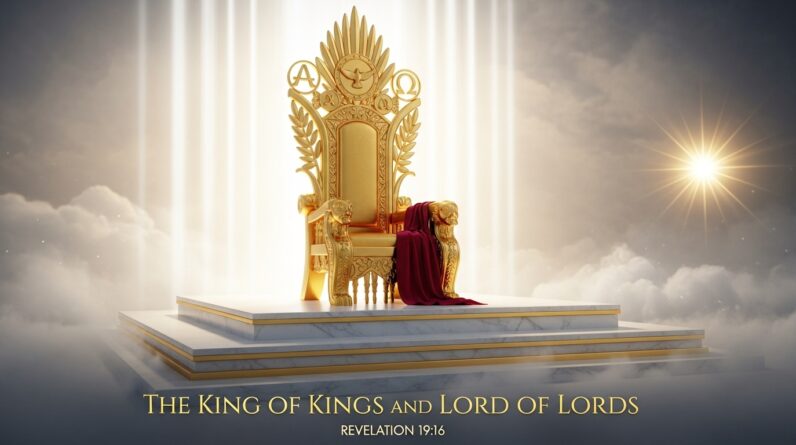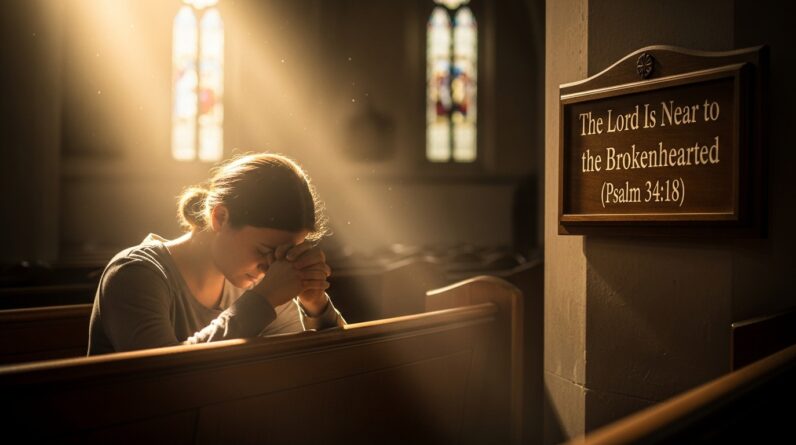Imagine being able to see into the future, to have a glimpse of what lies ahead. In the book of Daniel, we find a fascinating account of Nebuchadnezzar, the king of Babylon, and his dream that held profound prophetic insights. Daniel 2:28 tells us that God reveals deep and hidden things, and through this dream, He unveils a powerful message that transcends time. Join us as we explore Nebuchadnezzar’s dream and discover the prophetic insights found in Daniel 2.

Interpretation of Nebuchadnezzar’s Dream
The Introduction of Nebuchadnezzar’s Dream
Nebuchadnezzar, the king of Babylon, had a troubling dream that left him greatly disturbed. His dream was filled with profound imagery and symbols, and he desperately sought its interpretation. This dream held prophetic insights into the future, providing a glimpse into the unfolding of history and the rise and fall of powerful kingdoms.
The Role of Daniel in the Interpretation
In this perplexing situation, Daniel, a young Hebrew captive known for his wisdom and deep faith in God, emerged as the key figure in interpreting Nebuchadnezzar’s dream. Recognizing Daniel’s unique abilities and connection to the divine, the king turned to him for guidance. Daniel’s reputation for accurately interpreting dreams preceded him, instilling hope in the king that he would unravel the mysteries of the dream.
The Importance of the Dream’s Prophetic Insights
The dream that Nebuchadnezzar had was not just an ordinary dream. It held immense significance as it revealed divine insights into future events and the establishment of kingdoms. By understanding the true meaning behind the dream, Nebuchadnezzar could gain a deeper understanding of his own reign and the powerful forces that were at play in the world. The dream was a powerful tool that enabled Nebuchadnezzar to recognize the sovereignty of God and the impact of his actions on the course of history.
The Introduction of Nebuchadnezzar’s Dream
Nebuchadnezzar’s Troubling Dream
Nebuchadnezzar’s dream was not like any other dream he had experienced before. It troubled him greatly, filling his mind with questions and a sense of unease. The vivid imagery and the symbolism contained within the dream left him searching for answers. He knew that this dream held profound meaning, but the interpretation eluded him.
The Failure of the Wise Men to Interpret
Seeking guidance, Nebuchadnezzar called upon his wise men, the magicians, enchanters, sorcerers, and astrologers, to interpret his dream. However, the wise men failed to provide the king with the interpretation he sought. Frustration and anger consumed Nebuchadnezzar as he realized that even those considered the wisest in his kingdom were unable to decode the deeper meaning of his dream.
The Decree to Kill the Wise Men
Enraged by the failure of his wise men, Nebuchadnezzar issued a decree to kill all the wise men in his kingdom. His frustration and desperation pushed him to the extreme, demonstrating the gravity of the situation. The inability of the wise men to interpret the dream only heightened the significance of finding someone who could unlock its secrets.
The Role of Daniel in the Interpretation
Daniel’s Ability to Interpret Dreams
Daniel, known for his exceptional wisdom and connection to God, possessed the extraordinary ability to interpret dreams. Through divine revelation, he was able to unveil the hidden meanings and foresight contained within Nebuchadnezzar’s dream. His reputation as a dream interpreter and his unwavering faith in God’s guidance made him the perfect candidate to solve the mystery.
Daniel’s Request for Time
When presented with the challenge of interpreting Nebuchadnezzar’s dream, Daniel requested additional time to seek the divine intervention he needed. He recognized the complexity and importance of the dream and understood the gravity of the situation. Daniel’s humble request for more time reflected his deep reverence for God and his commitment to providing an accurate interpretation.
Daniel’s Faith in God’s Revelation
Daniel’s unwavering faith in God played a central role in his ability to interpret Nebuchadnezzar’s dream. He firmly believed that God had the power to reveal the hidden meanings and provide him with the understanding required to decipher the dream’s symbols. With complete trust in God’s revelation, Daniel anticipated receiving the wisdom and insight necessary to unlock the mysteries of the dream.
The Importance of the Dream’s Prophetic Insights
The Revelation of Future Kingdoms
Nebuchadnezzar’s dream revealed a sequence of powerful kingdoms that would rise and fall in the course of history. This prophetic insight provided an invaluable glimpse into future geopolitical developments and shifts in power. Understanding the rise and fall of these kingdoms allowed Nebuchadnezzar to gain a deeper understanding of his own reign and the ripple effects his actions would have on future generations.
The Image of the Statue
A key element of Nebuchadnezzar’s dream was the image of a statue, representing the various kingdoms that would come to power. Each part of the statue symbolized a different kingdom, with distinct characteristics and periods of dominance. This visualization allowed Nebuchadnezzar to grasp the interconnectedness of these kingdoms and the ultimate fate that awaited each of them.
The Nebuchadnezzar’s Dream as a Foreshadowing
Nebuchadnezzar’s dream served as a profound foreshadowing of future events, enabling him to see the rise and fall of powerful empires. By grasping the prophetic insights contained within the dream, Nebuchadnezzar could prepare himself for the challenges and changes that lied ahead. The dream’s revelations helped shape his perspective and decisions, highlighting the importance of understanding the implications of one’s actions in the grand scheme of history.

Symbolism in Nebuchadnezzar’s Dream
The Different Parts of the Statue
The statue in Nebuchadnezzar’s dream had distinct parts, each representing a different kingdom and period of dominance. The head made of gold, the chest and arms of silver, the belly and thighs of bronze, the legs of iron, and the feet made of a mixture of iron and clay. These various elements held symbolic meaning and offered insight into the nature and qualities of each respective kingdom.
The Head of Gold
The head of gold represented Babylon, Nebuchadnezzar’s own kingdom. Gold, a precious metal, signified the unparalleled wealth and power of Babylon during its reign. It symbolized the splendor and grandeur of the Babylonian empire, highlighting its dominance as a global superpower during that era.
The Chest and Arms of Silver
The chest and arms of silver symbolized the succeeding kingdom that would rise after Babylon. While not as magnificent as gold, silver held significant value and represented the strength and influence of this kingdom. It signified a shift in power and the rise of a new empire that would follow in the footsteps of Babylon.
The Different Parts of the Statue
The Image’s Head of Gold
The head of the statue in Nebuchadnezzar’s dream was made of gold, representing the powerful kingdom of Babylon. As the first kingdom mentioned in the dream, gold symbolized its unparalleled wealth, influence, and splendor. Babylon, under the reign of Nebuchadnezzar, was a prosperous empire that dominated the ancient Near East and left a lasting mark on world history.
The Chest and Arms of Silver
Following the head of gold, the next part of the statue represented the subsequent kingdom that would rise after Babylon. The chest and arms of silver symbolized the Persian Empire, which would conquer Babylon and become the dominant power in the region. While not as prestigious as gold, silver still held great value, representing the strength and influence of the Persian Empire during its reign.
The Belly and Thighs of Bronze
Continuing down the statue, the belly and thighs were made of bronze, signifying the next kingdom that would follow the Persian Empire. This kingdom, identified as the Greco-Macedonian Empire under Alexander the Great, wielded immense military prowess and cultural influence. Bronze, known for its durability and strength, represented the military might and enduring legacy of Alexander’s empire.
The Image’s Head of Gold
The Symbolism of the Head
The head of gold in Nebuchadnezzar’s dream carried profound symbolism. Gold, a precious and highly valued metal, represented the unparalleled wealth and power of the Babylonian Empire, which Nebuchadnezzar ruled over. This element of the statue served as a visual representation of the opulence, grandeur, and dominance that characterized Babylon during its reign.
The Representation of Babylon
As the first kingdom mentioned in the dream, the head of gold represented Babylon itself. Babylon, under the reign of Nebuchadnezzar, was a formidable empire that reached its zenith in terms of military conquest, cultural achievements, and architectural marvels. The abundance of gold symbolized the immense riches and prosperity that Babylon enjoyed during this period, solidifying its position as a global superpower.
The Significance of the Gold
Gold, as the material used to construct the head of the statue, carried immense significance. It represented the wealth and opulence that characterized the Babylonian Empire, illustrating the kingdom’s dominance and unrivaled power. This element of the dream emphasized the greatness and prosperity of Babylon, highlighting its elevated status among the nations and setting the stage for the subsequent kingdoms to come.
The Chest and Arms of Silver
The Meaning of the Silver
The chest and arms of silver, the second part of the statue, held symbolic significance in Nebuchadnezzar’s dream. Silver, while not as valuable as gold, still represented wealth and power, albeit to a lesser extent. It symbolized a shift in dominance and marked the rise of a new kingdom that would succeed Babylon.
The Kingdom Represented by the Chest and Arms
The silver of the chest and arms represented the Persian Empire, which would conquer Babylon and become the ruling power in the region. The Persian Empire, led by kings like Cyrus the Great and Darius the Great, saw significant expansion and political consolidation during its reign. The silver symbolized the strength and influence of the Persian Empire, highlighting its position as the successor to Babylon.
The Transition from Babylon to the Next Kingdom
The transition from the golden head of Babylon to the silver chest and arms of Persia marked a shift in power and domination. Babylon’s decline saw the rise of the Persian Empire as the new ruling force in the ancient Near East. This transfer of power, depicted through the change in materials from gold to silver, represented the historical transition and the passing of the torch from one empire to another.
The Belly and Thighs of Bronze
The Profound Symbolism of Bronze
The belly and thighs of bronze carried profound symbolism within Nebuchadnezzar’s dream. Bronze, a metal known for its durability and strength, represented the next kingdom that would emerge after the Persians. It signified the military might and cultural influence that the new empire would possess.
The Kingdom Symbolized by the Belly and Thighs
The kingdom symbolized by the bronze belly and thighs was the Greco-Macedonian Empire, led by Alexander the Great. This empire emerged as a dominant force after the Persians and expanded its influence across vast territories, forever altering the course of history. The use of bronze aptly represented the Greco-Macedonian Empire’s military prowess and its significant impact on the ancient world.
The Historical Context of the Bronze Kingdom
During the reign of Alexander the Great, the Greco-Macedonian Empire brought about a period of immense cultural and intellectual growth. This era, known as the Hellenistic period, saw the dissemination of Greek language, art, philosophy, and science throughout the lands conquered by Alexander. The bronze belly and thighs of the statue captured the essence of this epoch, symbolizing the empire’s far-reaching influence and historical significance.
The Legs of Iron and Feet of Iron and Clay
The Symbolism of Iron and Clay
The legs of iron and feet made of a mixture of iron and clay represented the next kingdom mentioned in Nebuchadnezzar’s dream. Iron, known for its strength and durability, represented the power and might of this kingdom. The addition of clay signified a mixture of strength and fragility, portending divisions and instability within this empire.
The Kingdom Represented by the Legs
The kingdom represented by the legs of iron and feet of iron and clay was the Roman Empire. This empire, known for its military prowess and centralized governance, dominated the ancient world for centuries. The strong iron legs epitomized the power and expansive reach of the Roman Empire, while the feet made of clay alluded to the internal divisions and eventual decline faced by the empire.
The Complexity of the Feet Made of Iron and Clay
The feet made of iron and clay in Nebuchadnezzar’s dream embodied the complexities faced by the Roman Empire. The mixture of iron and clay represented the coexistence of strength and weakness, unity and division within the empire. Over time, the internal fractures within the empire grew, leading to its eventual collapse and the fragmentation of its territories. The feet made of iron and clay served as a poignant reminder of the challenges faced by the Roman Empire and the inevitability of its decline.
In conclusion, Nebuchadnezzar’s dream and its interpretation by Daniel provided prophetic insights into the rise and fall of powerful kingdoms. Through the symbolism of the statue, the dream revealed the successive empires that would dominate the ancient world, from Babylon to Persia, Greece, and Rome. Understanding the meaning behind each element of the dream allowed Nebuchadnezzar to gain a deeper understanding of his own reign and the broader historical forces shaping the world. The dream served as a testament to the power of dreams and divine revelation, guiding Nebuchadnezzar in his decision-making and providing a glimpse into the unfolding of history.







